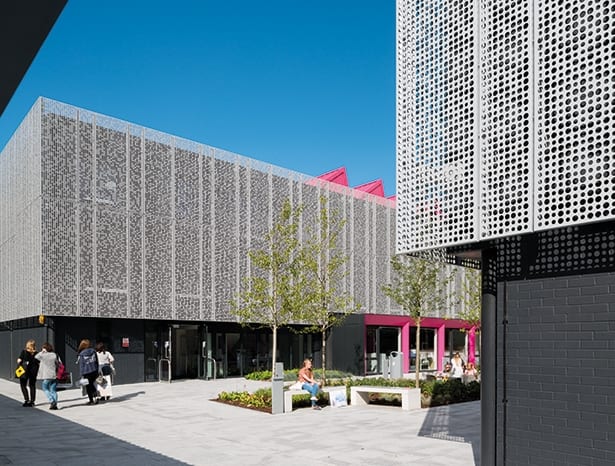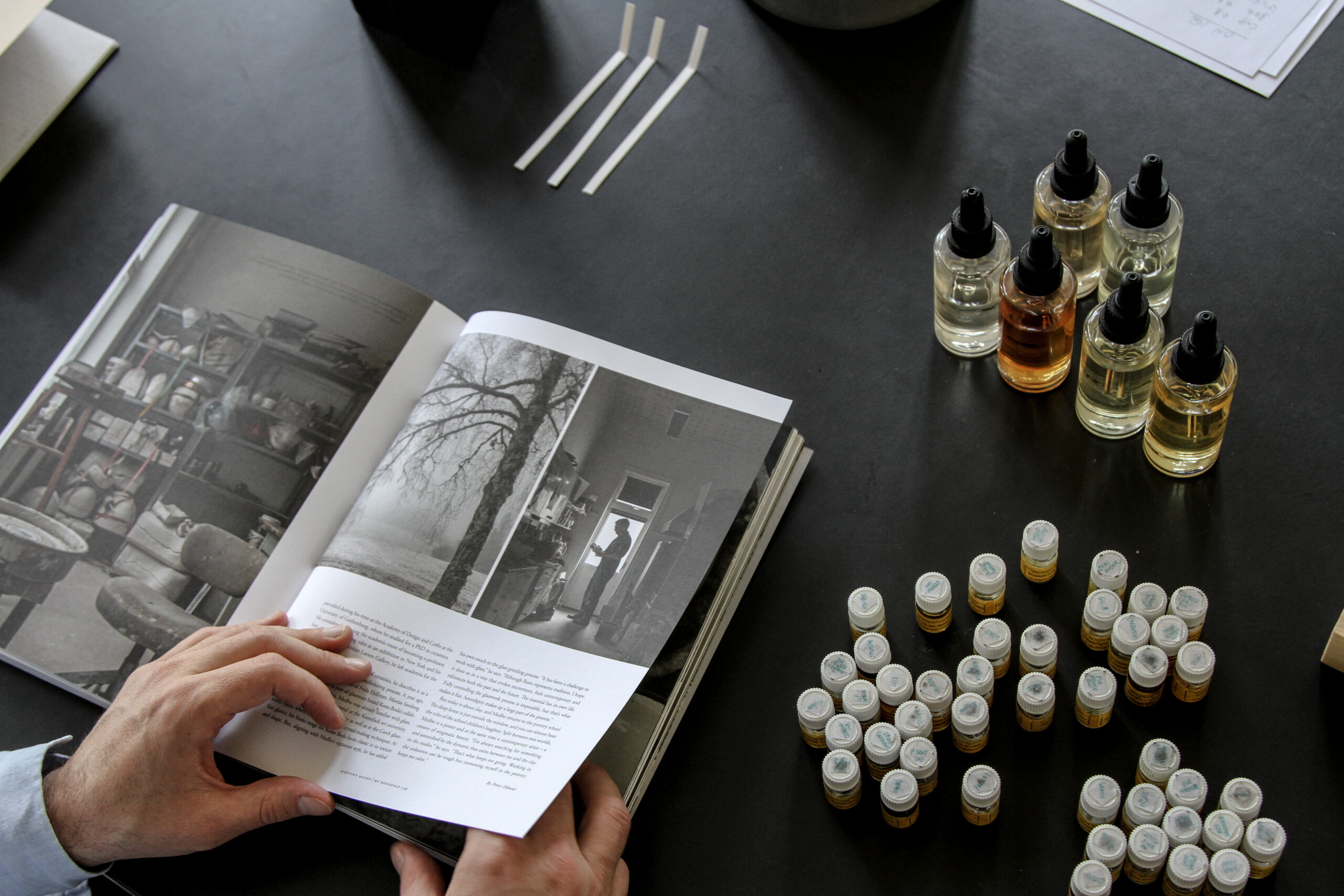 Electric pink signals the visual creativity within|||
Electric pink signals the visual creativity within|||
Modern design studios and workshops are the third stage of Design Engine Architects’ ongoing masterplan for Arts University Bournemouth (AUB), a thriving arts campus in need of an aspirational redevelopment.
“The university had built a lot on its site and was running out of land,” explains Design Engine founding director Richard Jobson. “The plan was a case of questioning their existing stock and understanding where gaps were, where elements of buildings could be further developed, possibly knocked down, where we could plug in new buildings to enhance the facilities already on campus.”
Out of this thought process came three projects. A new photography building has provided more informal learning spaces for students as well as specialist digital computer suites. The building creates a gateway on the site, allowing students to move more easily from north to south across the campus; its expressive facade is “a mark that AUB is a progressive, contemporary, modern university”.
 Neutral colours give a blank canvas for student creativity
Neutral colours give a blank canvas for student creativity
The second project, a new student support services building, signifies the university’s increasing dedication to this crucial support system, as well as forming a second gateway through the site.
The latest phase of the work has continued to improve circulation through the university and provides more specialist spaces for students. New design studios and workshops have been created in former halls of residence, two “drab, grey buildings” constructed in 2001, that no longer met the needs of modern student accommodation.
Design Engine began the transformation by carrying out structural studies to determine if it was possible to restructure loadbearing buildings such as these to form large studio spaces. They removed the loadbearing partitions of the residential buildings, inserted a steel frame to address the new structural needs and created a series of north-facing rooflights in order to open up the spaces.
 The new studios are relatively modest spaces
The new studios are relatively modest spaces
The saw-tooth rooflights were clad in bright brink, forming what Jobson describes as a “magenta pink, punk rock hair cut on the top of the building” – an uplifting representation of the school’s creativity. A perforated aluminium veil was also added, wrapping around the building on the first and second floors.
The rooflights, atop a raised roof podium, bring natural daylight into drawing studios for the model-making, illustration and fashion design students, while heavyweight, mechanised modelling and prosthetic workshops are grouped on the ground floor.
“There’s lots of natural light at the top and natural light in pockets on the ground floor. The intervening floors are for makeup students – and for theatre and film makeup, natural light isn’t such a great idea,” says Jobson. “It was quite counterintuitive really that we created studios that were mostly artificially lit.”
 Design Engine’s earlier student services building
Design Engine’s earlier student services building
The design studios, like the earlier projects, are relatively modest spaces. “AUB is a creative campus full of creative people so we were trying to provide a backdrop for those kind of students and staff to work in,” comments Jobson.
“You don’t want to overly play your hand in terms of the interior spaces because you want the students to fill them with their own creativity… But where we had the opportunity, certainly on the external parts of the buildings, we’ve been more expressive in presenting that creative backdrop.”
When visiting AUB for the first time, Design Engine noted that while the university enjoyed strong curation on its walls, very little of its work could be seen from outside the buildings. A series of ground floor extensions for 3D printing now extend on to re-landscaped courtyards, highlighted by more electric pink. These will act as shop windows to the courses, displaying student work.
 Rooflights bring natural light into top-floor studios
Rooflights bring natural light into top-floor studios
“In previous projects we’ve looked at siloing, students coming in, working [in their own departments] and when they leave they’ve not got that richness,” says Jobson. “We wanted to create spaces that when you walked through or passed them, you might think ‘oh, that’s interesting, I didn’t know that went on’. It’s about making sure that the architecture allows that to happen.”
The architects created a short film to celebrate the way that the new spaces are being used, and for Jobson and the team “what’s most gratifying is that the students make use of the interstitial spaces or tertiary spaces”.
“It’s making these the spaces where students gather that’s great – where, in a sense, the value of the project is,” he reflects. “The studios are obviously essential for their course but they aren’t necessarily the spaces that students remember. It’s probably more the spaces that join them together – spaces where you have that kind of serendipity and chance meetings.”
Design Engine’s new studios and workshops give the students of Arts University Bournemouth a bright, dynamic workspace























